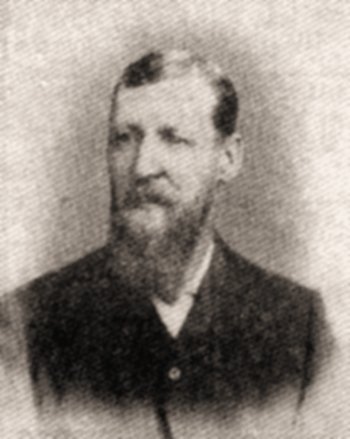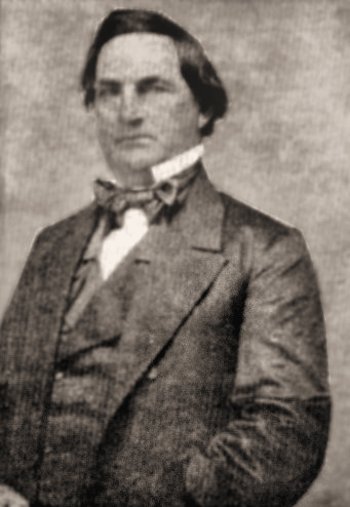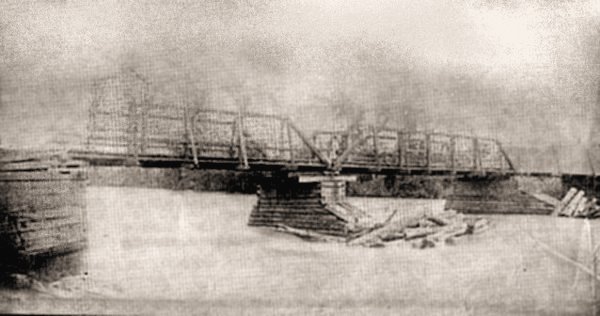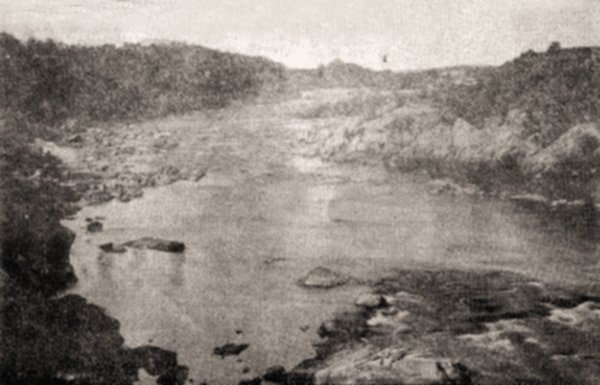|
|
|
Clark County Press, Neillsville, WI May 20, 1993, Page 36 Transcribed by Dolores (Mohr) Kenyon. Index of "Good Old Days" Articles
|
|
|
|
Clark County Press, Neillsville, WI May 20, 1993, Page 36 Transcribed by Dolores (Mohr) Kenyon. Index of "Good Old Days" Articles
|
Good Old Days
BLACK RIVER, A PIONEER HIGHWAY
By Dee Zimmerman
The Black river was the early pioneer’s highway into Clark County. The pioneers traveled its waters coming to explore, exploit and settle. Down its waters, they sent logs, lumber and other wood products, harvested from the area, being sent to market. When they thought of this section of Wisconsin, they first thought of the river.
At this point in time, the Black River has a different interest for those who live near it. Some may fish its waters enjoy boat rides on it with their speed boats, set up a campsite along its shores for a relaxing weekend which may include some swimming or water skiing – all of a recreational nature.
Instead of a highway in necessary traveling, it is sometimes an obstacle to where we plan to go. A road must be taken which has a bridge for crossing the river as our highways are now on the ground, not the waterway. The Black River was not always easy to travel on by boat or canoe, low water revealed many rocks rising near or through the surface were an obstruction over which they had to carry canoe or boat and cargo. Occasionally, rafts or keel boats broke up when hitting rocks, resulting in lost cargo.

|
Joseph Nesbitt “Boss of the Black River,” was manager of the Black River Improvement Company. It was his duty to oversee the maintenance of the two dams; to direct impounding of water for the big log drives; to superintend the drives and get the logs down to Onalaska and La Crosse; to collect the tolls on the river traffic. |
Not only was Black River, a highway, it was a toll road for some time. Just as in later days, private parties were given the legal right to make a road and charge the public for passage over it, so Black River was turned over to a private concern for improvement and exploitation. That was the old Black River Improvement Company, which, in effect, owned and managed the Black River for nearly 30 years. The organization was made up largely of lumbermen who lived at La Crosse or Onalaska. Their primary purpose was to control the river in such a way as to get their logs down to market. When James and Henry O’Neill came up to the site of Neillsville in 1844, they came up the river presumably by canoe. The canoe was the ordinary means of transportation, when pioneers traveled light. With a great amount of supplies they used a large boat, a bateau. When they had a big load of great weight, such as machinery for a saw mill, they used a keel boat.

|
Jacob Spaulding known as the first pioneer to transport saw mill equipment on a keel boat up the Black River to Black River Falls where he build a saw mill |
One of the early records described the keel boat which the Woods and Jacob Spaulding used to bring the first saw mill machinery up the river to Black River Falls. It was 60 feet long, had platforms on each side for the entire length of it. Those platforms were used by the men who pushed the boat upstream. Each man was armed with a long pole which he put in the river, to the bottom. He started at the front end of the boat, walked backward, pushing as he went, then, he returned to the boat’s front, repeating that sequence, over and over, until their destination was reached. It took a large crew to push a boat up the river in that manner. A good record was 20 miles travel per day.
The first telephone and line followed the river. That first line was installed by the Black River Improvement Company, and was used primarily in its own operations. The line ran from La Crosse to Hemlock, just above Greenwood. It was used to control the height of the water at the dams and to manage the log drives. It maintained an instrument in the old Peterson store at Greenwood, where Peter E. Peterson was its agent and manager in later years. When the Improvement Company, discontinued its activities in the 1890’s the old telephone fell into disuse and finally disintegrated. Its disappearance was a symbol of the decline in importance of the river as a means of transportation.
The control of the Black River was given to the Black River Improvement Company by an act of legislature of 1864, as amended in 1866. It was a special act, such as could not have been passed by the legislature after 1872, when a constitutional amendment forbade the creation of corporations by special enactment.
The control of the river was challenged by other organizations, particularly the La Crosse Booming and Transportation Co., and Black River Flooding Dam Association. But the Wisconsin Supreme Court held with the Black River Improvement Co., maintaining its right was exclusive; and barred others from any part of the river.
The Black River Improvement Co. was chastised by historians, in their writings of about 1900, saying: “It was the policy of the company to discourage the manufacture of lumber on the river, except at its mouth. They felt that was a selfish ruling, taking no thought of the years to come. If all the logs cut from Clark County soil had been manufactured within the county by means of the magnificent water power that lay at their doors, this county would contain cities, as well as in name, and would have become many times wealthier at that time.”
A service of the Black River Improvement Co. was maintaining the dams. It was necessary to provide a crest of water in strategic spots upon which logs could be driven, below both dams where there were shallow rapids, upon which the logs would jam. Above the dams, logs were caught by booms. The waters had been held back by the dams, which had a sluiceway at the center.
When the log drive began in the spring with high water, workers pried the planks out of the sluiceway and released the flood held above it. The boom was released, and the logs began to come down through the sluiceway. Occasionally an obstruction would cause a log jam, requiring the river men to break them loose.
The terms of the act creating the Company suggested widening, straightening and digging out the channel of Black River into the Mississippi’s bottom lands, erecting more booms, piers, levees, etc. The Company performed operations only as necessary in getting the logs down to he (the) Mississippi River for which services they received tolls.
Early historians estimated eight billion feet, board measure, were moved down the river. In terms of logs of average diameter, placed end to end, the amount of this lumber would be such that logs would extend 121,000 miles, or nearly five times around the world at the equator. The value of lumber thus run out has been placed at $100 million.
The extent of that lumber traffic on the waterway is difficult for us to fathom. That rapid activity in clearing land took away a lot of wealth with much being wasted and the end came in the 1890’s.

|
Black River and the first bridge that crossed it near Neillsville in the early logging days, logs would get caught on the pilings as they floated downstream. (Photo courtesy of Pat Struble) |

|
Black River below Dells Dam – much of the course of Black River through Clark County is over granite rock. The setting is picturesque, but the rocks can be difficult to negotiate when boating. It was rocks like these which broke up rafts carrying lumber to market for the early lumbermen. During the period of heavy logging the lumber went downstream in huge log drives.
*The above photo was not originally part of this article. It was submitted by the family of Peggy L. Walter and was taken from a postcard booklet titled, "Souvenir Letter", Neillsville, Wis. |
¤¤¤¤¤¤¤¤¤¤¤¤¤¤¤¤¤
|
© Every submission is protected by the Digital Millennium Copyright Act of 1998.
Show your appreciation of this freely provided information by not copying it to any other site without our permission.
Become a Clark County History Buff
|
|
A site created and
maintained by the Clark County History Buffs
Webmasters: Leon Konieczny, Tanya Paschke, Janet & Stan Schwarze, James W. Sternitzky,
|